KIA Niro: Fuel Pump Motor Repair procedures
Kia Niro - First generation - (DE) (2017-2022) - Service and Repair Manual / Engine Control / Fuel System / Fuel Delivery System / Fuel Pump Motor Repair procedures
Removal
- Remove the fuel pump.
(Refer to Fuel Delivery System - "Fuel Pump")
- Disconnect the fuel pump motor connector (A) and fuel sender connector (B).
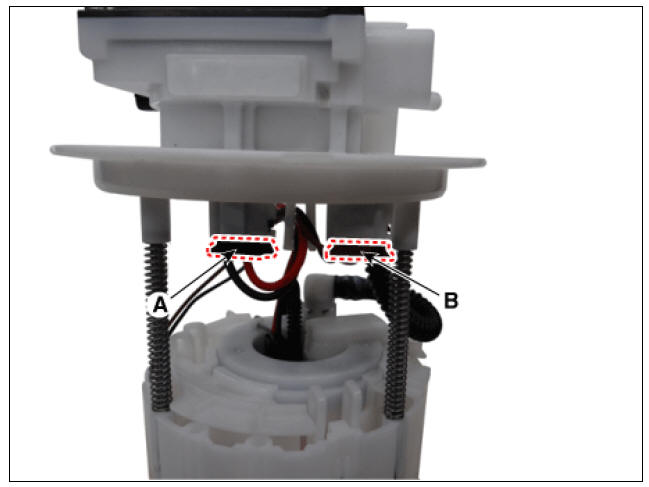
- Lift the fixing hook (A) by using a common driver, and then remove the fuel sender (B).
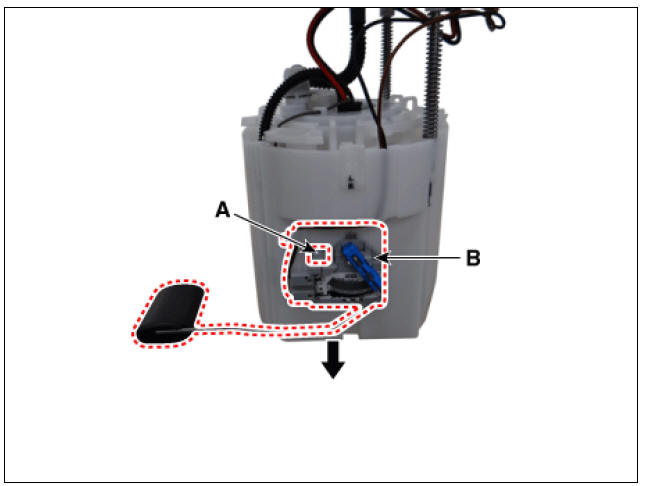
- Remove the fixing clip (A), and then disconnect the feed tube (B).

- Remove the head assembly after releasing the cushion fixing clip (A).
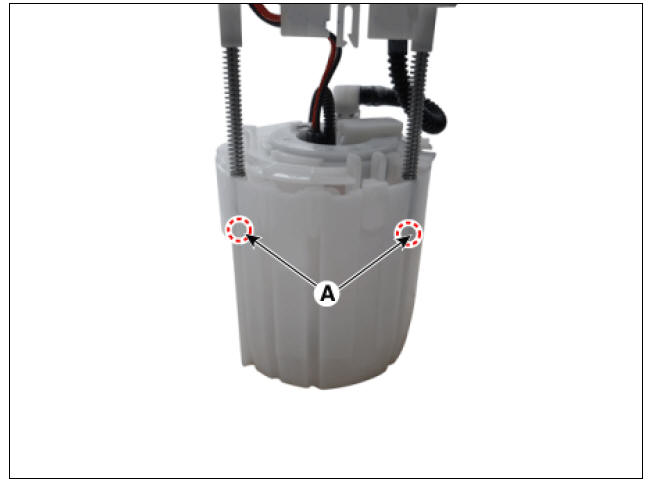
- Remove the reservoir-cup (B) after releasing the fixing hook (A).
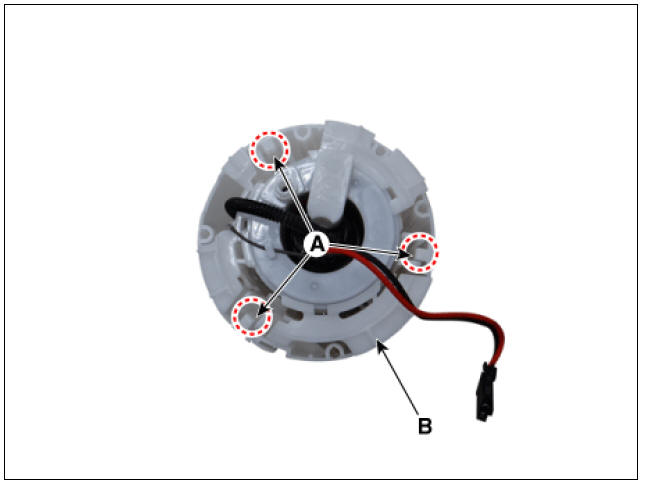
- Disconnect the ground line (A).
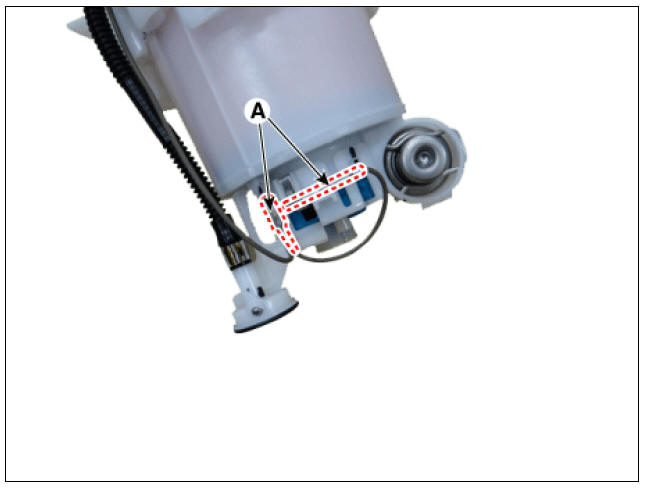
- Disconnect the fuel pump motor connector (A).

- Remove the fuel pressure regulator (B) after releasing the fixing hook (A).
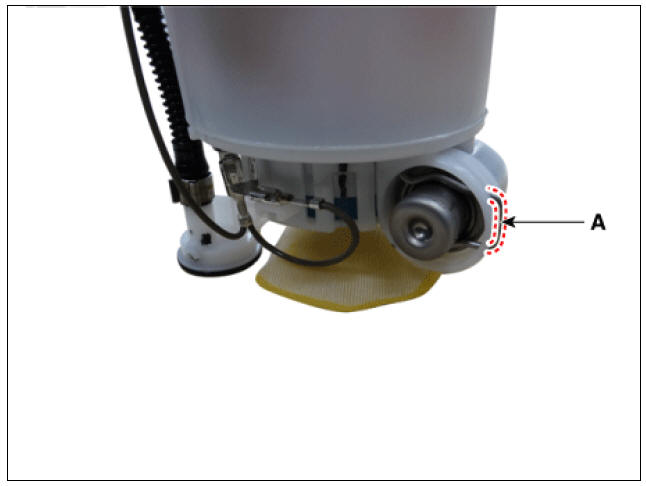
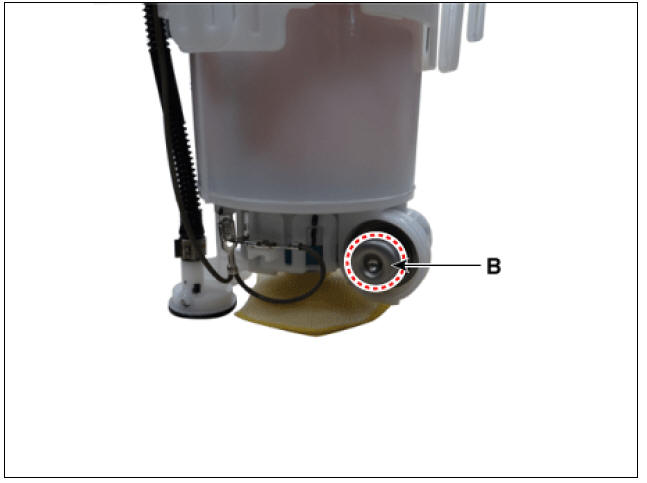
- Remove the pre-filter (B) after releasing the fixing hooks (A).
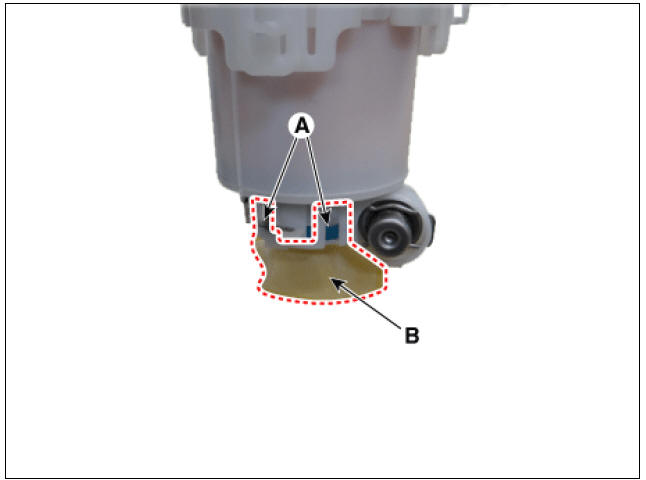
- Remove the fixing clip (A), and then assist pump assembly (B).

Warning
1) Unhook the clip (A,B) by using an awl (C).

2) Separate the tube (A) with the assist pump (B) by pulling it

- Remove the fuel pump motor (A) from the fuel filter by pulling it downward.

Installtion
Warning
1) Put the tube (A) into the assist pump (B).

2) Put the clip (A) on the joint.

3) Hook the clip (B,C) by using plier (A).

4) Fix the clip (A). 
READ NEXT:
 Fuel Sender Repair procedures
Fuel Sender Repair procedures
Removal
Remove the fuel pump.
(Refer to Fuel Delivery System - "Fuel Pump")
Disconnect the fuel sender connector (A).
Lift the fixing hook (A) by using a common driver, and then remove the
fuel sender (B).
 Fuel Pressure Regulator Repair procedures | Fuel Line Repair procedures
Fuel Pressure Regulator Repair procedures | Fuel Line Repair procedures
Removal
Remove the fuel pump.
(Refer to Fuel Delivery System - "Fuel Pump")
Disconnect the fuel pump motor connector (A) and fuel sender connector (B).
Lift the fixing hook (A) by using a comm
SEE MORE:
 ETC (Electronic Throttle Control) System Repair
ETC (Electronic Throttle Control) System Repair
Inspection
Connect the KDS on the Data Link Connector (DLC).
Start the engine and measure the output voltage of TPS 1 and 2 at C.T.
and W.O.T.
Throttle Position Sensor (TPS)
ETC Motor
Switch "OFF" the ignition.
Discon
 Locking/unlocking/remote starting/remote parking with the smart key (Kia
Niro EV)
Locking/unlocking/remote starting/remote parking with the smart key (Kia
Niro EV)
Smart key
Lock
Unlock
Tailgate unlock/open
Remote start
Remote Start Parking Assist (Forward)
Remote Start Parking Assist (Backward)
Operation
Press the corresponding button.
Press the door lock button (1) and
hold the remo
Categories
- Home
- KIA Niro EV, Hybrid - Second generation - (SG2) (2021-2024) - Owner's manual
- Kia Niro - First generation - (DE) (2017-2022) - Service and Repair Manual
- Contact Us
